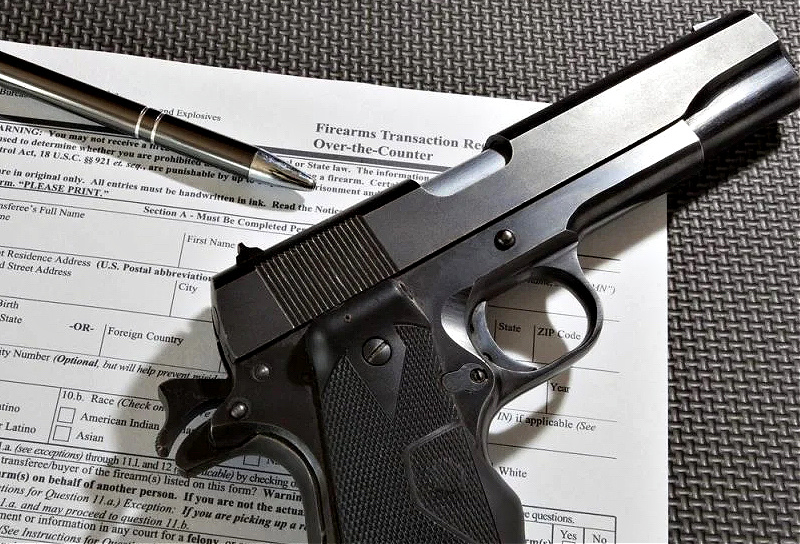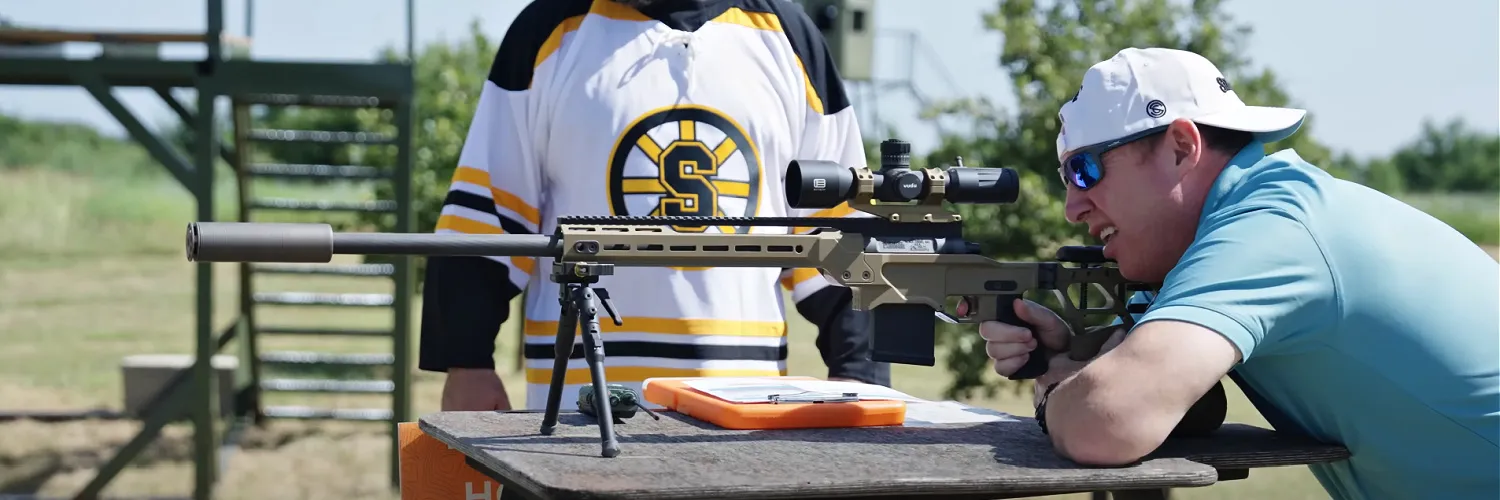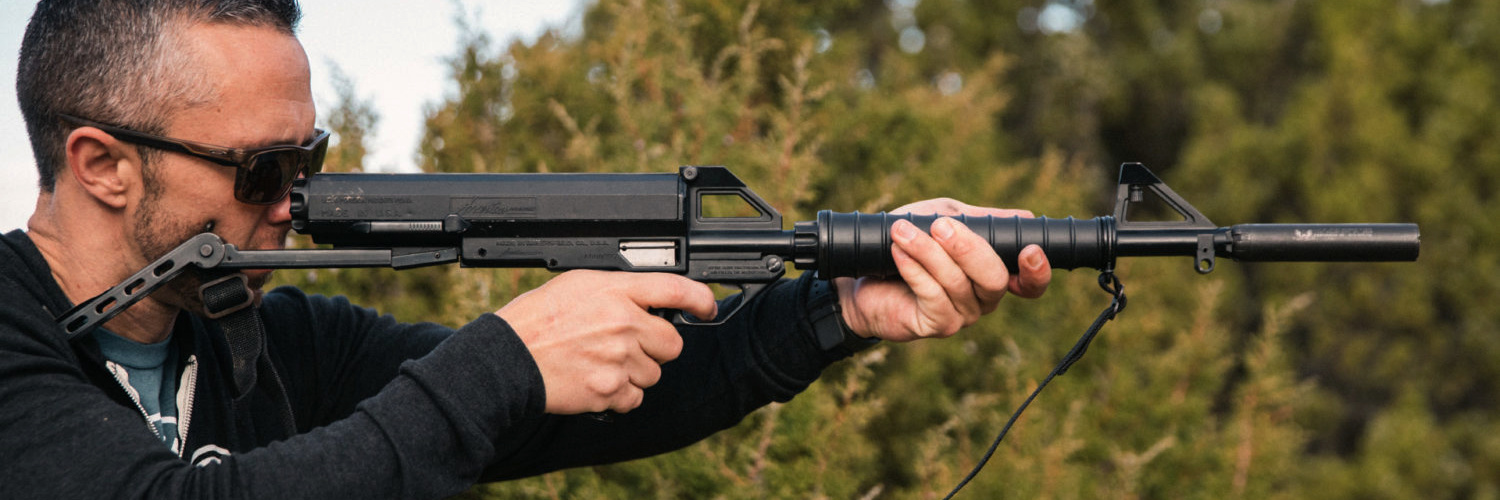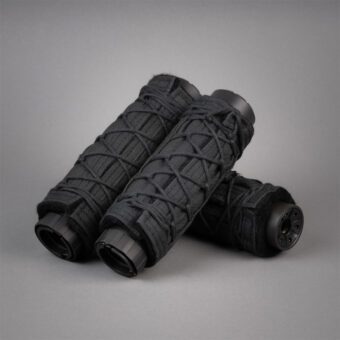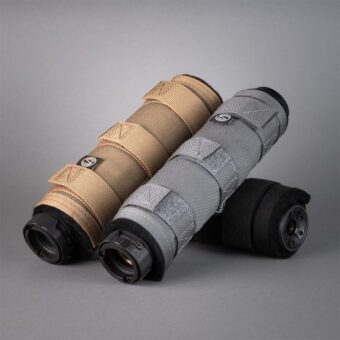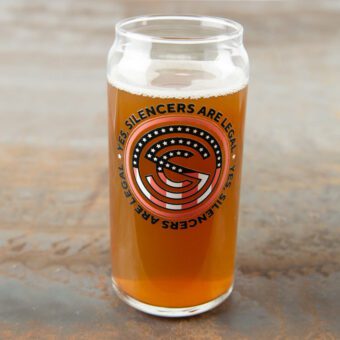Best Suppressors for Handguns in 2025
Travis Pike
Choosing the right suppressor makes all the difference in recoil control, sound reduction, and shooting comfort. In this 2025 guide, we highlight the best SilencerCo suppressors by caliber—and the one we think dominates the subgun category.
Whether you’re running a .22 plinker, a duty-sized .45, or a 10mm powerhouse, there’s a SilencerCo suppressor built to handle it.
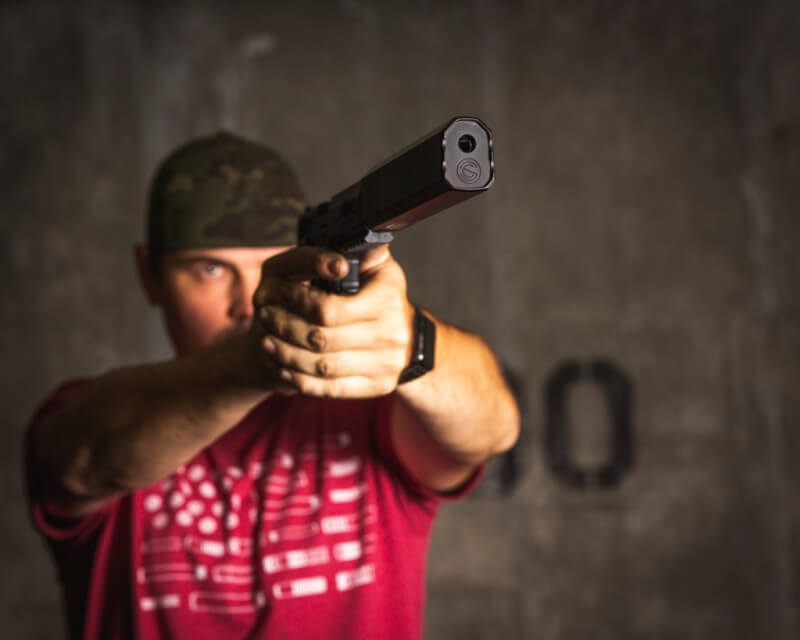
Why Suppress Your Handgun?
Putting a “can” on a pistol may seem counter-intuitive—you’re adding length to a tool prized for its compact size—but the advantages easily outweigh the extra inches. A quality suppressor not only quiets the report but also tames recoil, reduces muzzle flash, and makes every trigger press more controllable.
Key Benefits
Hearing Protection: Lower decibel levels mean you can train all afternoon without your ears ringing—or risk damaging everyone’s hearing in a confined indoor range. Pair a suppressed handgun with subsonic ammo and you’ll have a quiet, capable firearm that’s far easier on the ears.
Low-Flash Home Defense Setups: In a dark room, a bare muzzle’s flash can momentarily blind you and give away your position. A suppressor significantly reduces that flash, helping you stay focused on the threat. In low-light scenarios, like a nighttime home invasion, this can protect your natural night vision and give you a critical edge—while also preserving your hearing.
Competitive Shooting and Training: Suppressors reduce recoil and muzzle rise, leading to faster follow-up shots and tighter groups—benefits that apply whether you’re running drills or racing the clock. While some action shooting sports prohibit suppressors, the ban isn’t universal, and they can still be a valuable training tool for competitors.
Tactical Applications: A suppressed handgun offers clear tactical advantages: reduced noise and muzzle flash help preserve night vision and conceal your position, especially in low-light or indoor environments. It protects hearing, improves communication, and enables faster follow-up shots through reduced recoil. In team settings or home defense, these factors can make a critical difference.
Hunting and Field Use: Suppressors can be handy for handgun hunting. If you find yourself in the woods, armed with your favorite 10mm pistol, a suppressor is an excellent tool to have on hand. It preserves your hearing and reduces noise pollution for other hunters trying to bag a buck.
It also reduces recoil and muzzle rise—especially important when firing heavy hunting loads—thanks to the baffle structure and added weight, which act much like a muzzle brake.
Pure Shooting Enjoyment: Finally, it’s just nice to plink with. It somehow makes shooting even more fun. Shooting a suppressed handgun is a joy, and that’s enough for most of us.
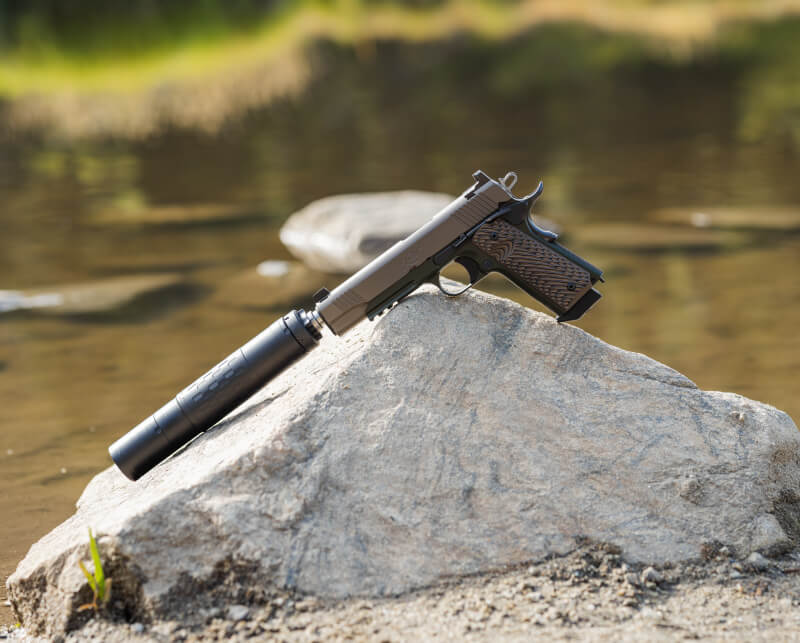
What to Look for in a Handgun Suppressor
Buying a suppressor is a significant investment—not just financially, but also in time and effort due to the NFA process. It’s smart to research thoroughly and have a clear understanding of your needs before committing.
Here are the key factors to consider:
Caliber Compatibility
This is arguably the most important factor. Suppressors are often caliber-specific, and using the wrong one can be dangerous. The baffles are sized for specific bullet diameters, so firing a larger round—like .45 ACP through a 9mm suppressor—can destroy the can. Always match your suppressor to the calibers you plan to shoot.
Mounting Options
Adding a suppressor to a handgun—especially one that uses a tilting-barrel, short-recoil system—can disrupt reliability due to the extra weight on the moving barrel. This system will require a booster, or Nielsen device, that allows for a bit of movement and ensures reliable cycling.
Other guns, notably gas-retarded (also known as gas-delayed) and straight blowback systems, use a fixed barrel. These systems do not require a booster and can use a direct thread option.
Pistons, often used in conjunction with boosters, allow for easy swapping between thread pitches on host guns, and also help manage recoil impulse.
Length and Weight
A suppressor adds both bulk and mass to a handgun, which can affect handling. A long or heavy can may make a compact pistol feel nose-heavy or awkward. While this doesn’t impact performance, it can affect how enjoyable or practical the setup is—especially if your pistol is on the smaller side. What feels balanced on an HK Mk 23 might feel clumsy on a Walther PPK.
Durability and Build Quality
Materials matter. Look for suppressors made from stainless steel, titanium, or Inconel for long-term durability. If you’re running high round counts or using the can across multiple hosts—including carbines or full-auto firearms—consider a suppressor with a full-auto rating.
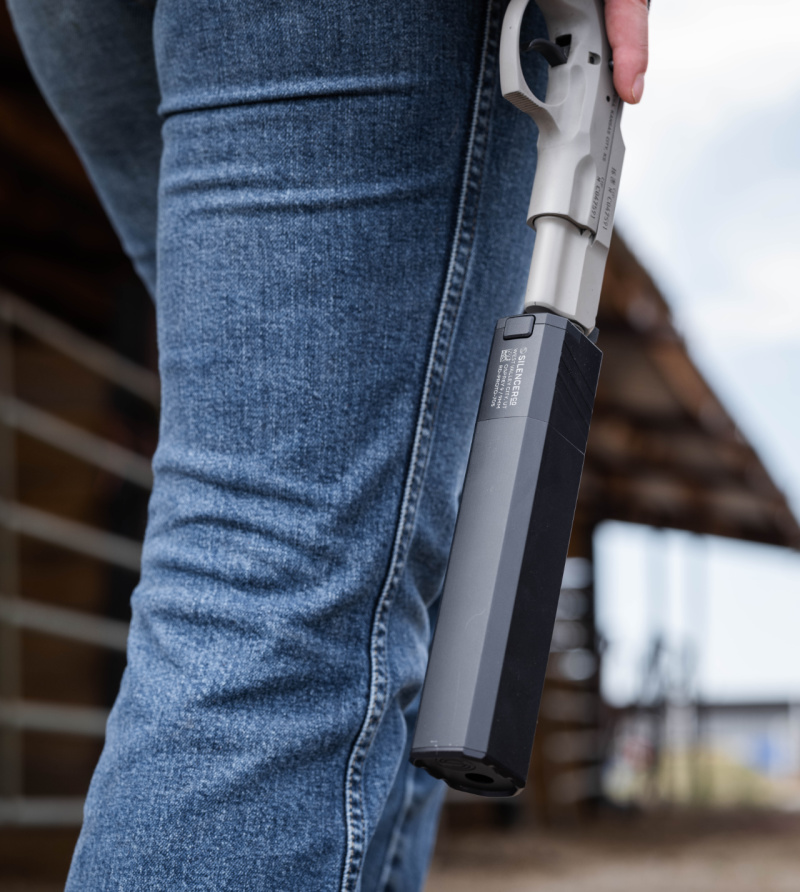
Best SilencerCo Suppressors by Caliber
SilencerCo offers a range of suppressors tailored to different calibers and shooting needs. Whether you’re plinking with rimfire or carrying a duty-caliber pistol, there’s an option that gets the job done right.
Best for .22 LR: Sparrow 22
The modest .22 LR is one of the most popular cartridges in the United States. It’s used in hundreds of different handguns and is also one of the best calibers for suppression. Subsonic .22 LR is easy to find, and when paired with a suppressor, it becomes an extremely quiet experience.
For a .22LR handgun, there is no better suppressor than the Sparrow 22. It’s a rimfire classic perfectly suited for both old and modern .22LR handguns. As long as the barrel is threaded, the gun will be adequately suppressed by the Sparrow 22.
Handguns in .22LR tend to be lightweight, and the 6.5-ounce Sparrow 22 isn’t going to throw most guns off balance. It’s short at 5.08 inches, and slim with a 1.07-inch diameter. Paired with a subsonic cartridge, you’ll land comfortably in the hearing safe realm.
It’s a total blast to suppress a .22LR handgun, but outside of fun, it can also be a very efficient small game and pest remover.
The .22 may be a dirty little cartridge, but the Sparrow 22 is user-serviceable. When it gets fouled up, you can take it apart, clean it, and get back to shooting.
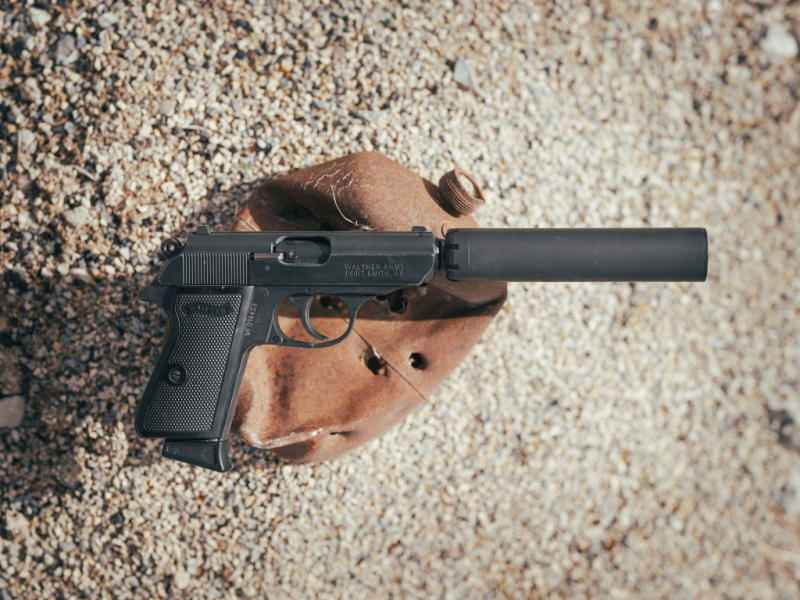
Best for .380 ACP: S98
The .380 ACP often finds its home in compact, concealment-friendly handguns. Known overseas as the “9mm short,” it strikes a solid balance between size, power, and recoil, making it a popular choice for everyday carry.
SilencerCo’s S98 is a standout suppressor for the .380 ACP. Like many of the pistols chambered for this round, it’s compact and lightweight, measuring just 5.54 inches in length and weighing only 7 ounces. It won’t throw your little .380 off its balance.
The S98 is direct-thread compatible, which is important since a ton of these small blowback-operated guns are direct blowback and don’t require a piston. Suppressing classics like the Walther PPK has never been easier.
Despite its size, the S98 is a high-performance suppressor. Its 3D-printed Inconel baffle structure is tough, efficient, and excels at reducing noise, flash, recoil, and muzzle rise. The S98’s unique profile makes it easy to use standard height sights, which makes a ton of sense because suppressor height sights on small guns don’t make much sense.
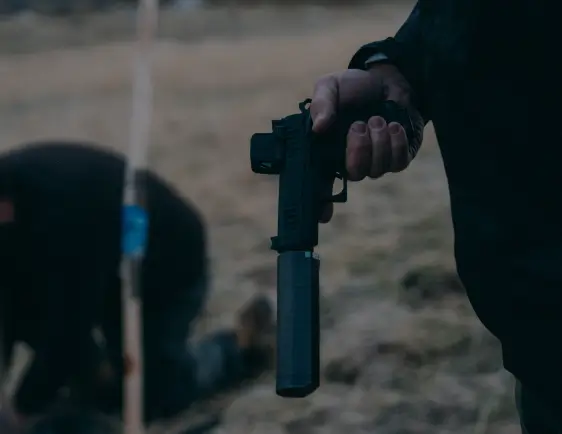
Best for 9mm: Spectre 9
The Spectre 9 is a personal favorite, so I’ll admit some bias here. But there’s a reason 9mm handguns are the most popular centerfire pistols—they offer a great balance of manageable recoil and effective terminal performance.
For suppressed shooting, subsonic rounds are common and affordable. Pair a 147-grain subsonic 9mm round with your chosen handgun and the Spectre 9, and you’ve got an extremely quiet combination that’s perfectly suited for home defense.
The Spectre 9 offers one of the best blends of performance and size on the market, keeping things light without sacrificing strength. It’s full-auto rated, extremely durable, and handles heat well—all while staying under five inches in length.
Most 9mm pistols will require a booster for reliable function, and the Spectre 9 is fully compatible with booster devices. It doesn’t just suppress sound; it also tames muzzle flash, recoil, and muzzle rise.
It’s a do-it-all can.
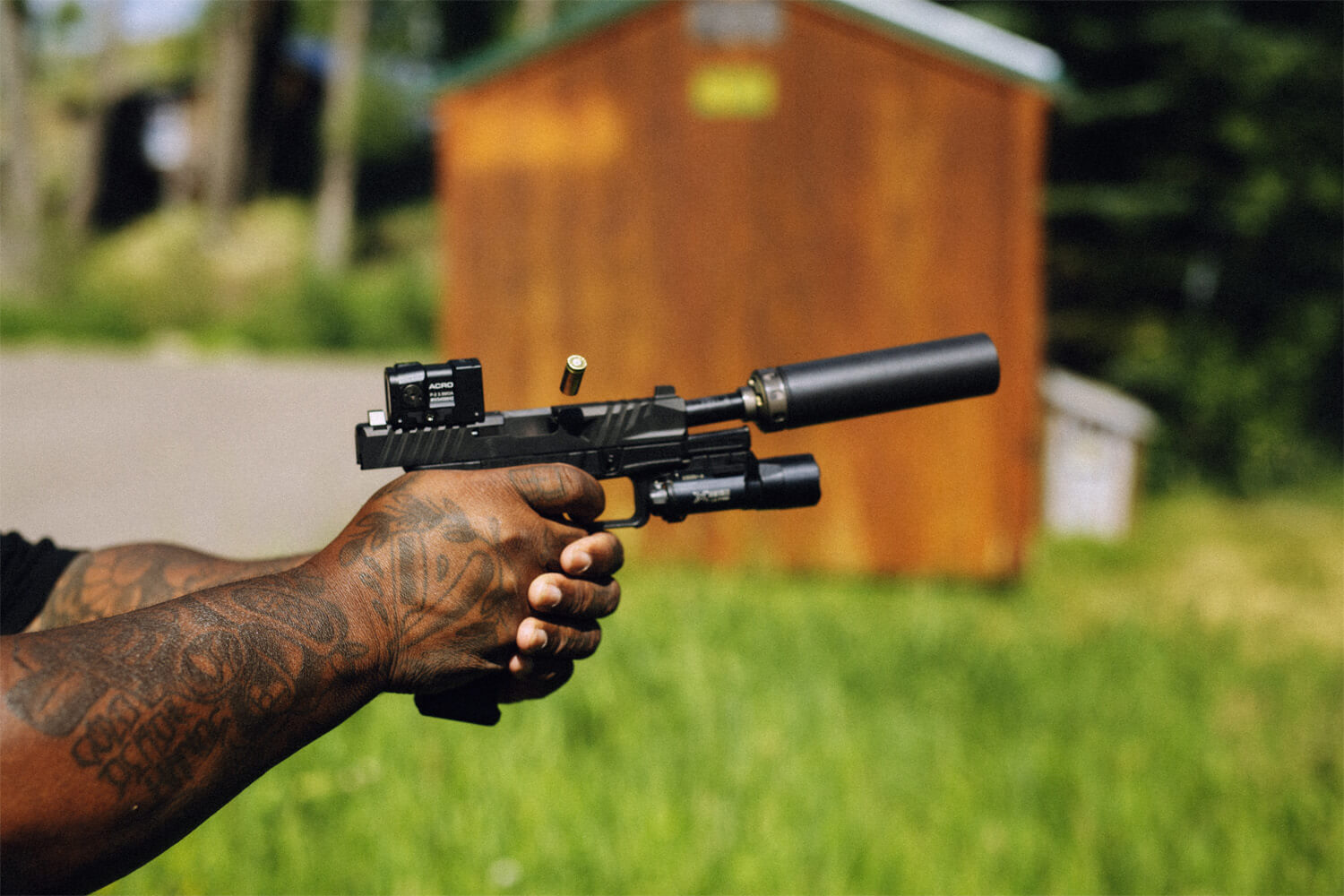
Best for .40 S&W and 10mm: Hybrid 46M
When it comes to cult cartridges, the .40 S&W and 10mm each have dependable followings that don’t rely on military or law enforcement adoption. The two rounds are basically brothers, as the .40 S&W wass derived from the 10mm Auto. And while they both use .40 caliber projectiles, they have two very different uses.
.40 S&W strikes a solid balance between power and practicality. It delivers hard-hitting performance with subsonic ammo options and excellent capacity. Many argue it’s the best suppressed defensive caliber. It offers a bigger, heavier bullet than the 9mm with more capacity than the .45 ACP, and you have subsonic ammo options.
The 10mm, on the other hand, gives us a magnum caliber in a semi-auto handgun. It gives you the power of a low-end .41 Magnum with the capacity of a modern handgun. The bullets move fast and hit hard, making it a natural choice for bear defense and medium game hunting.
Because both calibers use .40-caliber projectiles, they’re too large for most compact and lightweight suppressors and get us into things like the Hybrid 46M. Built to handle much higher pressures—including rifle calibers like .450 Bushmaster and .458 SOCOM—it shrugs off the recoil and muzzle blast of .40 S&W and 10mm without issue.
A rifle can seems a bit long for a pistol cartridge, but don’t fear! It’s a modular suppressor that can be shortened and lightened so it works a bit better with handguns. The 46M is perfect for a shooter looking to suppress a .40 S&W, 10mm, and a dozen other full-powered rifle rounds.
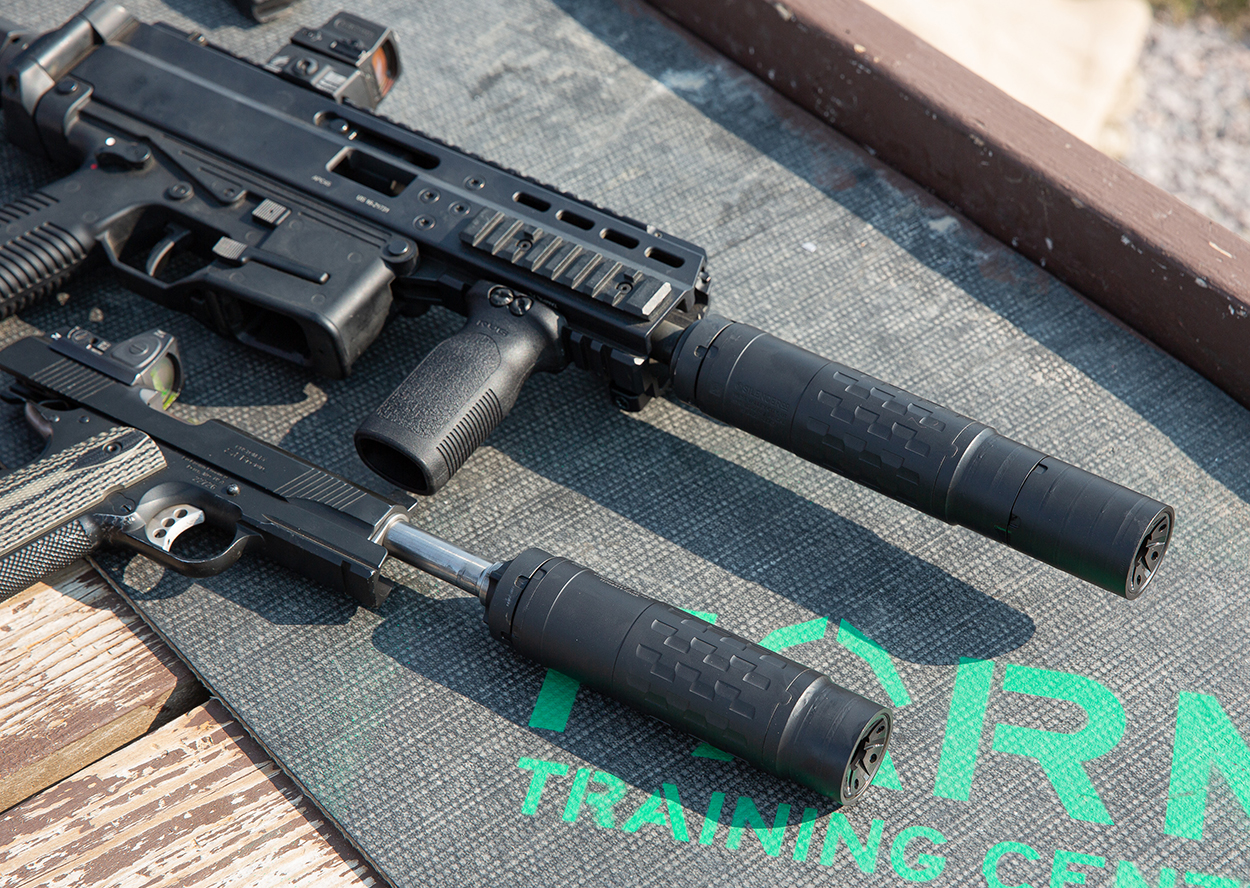
Best for .45 ACP: Osprey 45
Is there a round more American than the .45 ACP? At nearly half an inch, the .45 ACP round is a big, slow, heavy round that works wonderfully out of suppressors. You don’t have to look for subsonic ammo because basic 230-grain .45 ACP ammo is naturally subsonic.
It’s a great shooting, easy to suppress caliber, and if you aren’t suppressing it, you’re missing out. The Osprey 45 is the way to go when it comes time to suppress the old warhorse. From the old M1911 to a Mk.23, the Osprey 45 will give you one of the most pleasant shooting .45 experiences out there.
If you want one of the most satisfying range experiences, put an Osprey 45 on your chosen .45 ACP pistol and shoot a steel target. The disparity between the lack of noise from the gun to the big, fat .45 ACP smacking into that steel target will make you smile.
We haven’t even mentioned the best feature of the Osprey 45—its offset design. By shifting the bulk of the suppressor below the bore axis, it keeps your sight picture clear. That means you can use standard-height sights. It’s a tool-less locking system that easily indexes and falls naturally into position on whatever .45 you equip it with.
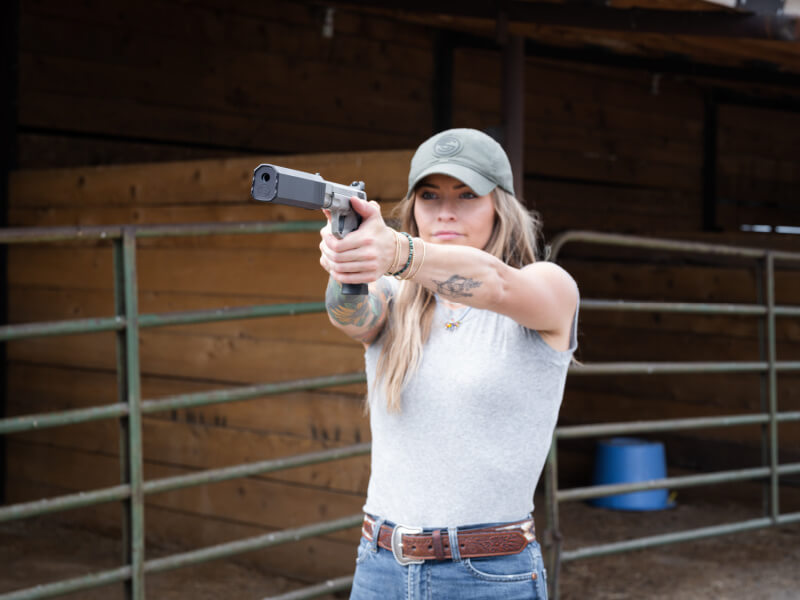
Bonus Pick: Best Subgun Suppressor
I love pistol caliber carbines and subguns, so naturally, I use a lot of pistol suppressors on guns that aren’t technically pistols. Specifically, 9mm rifles and subguns. With that in mind, which suppressor do I reach for most often? It can depend, but I typically pick up the Omega 9K.
Rifles and even subguns are already a little long, and they work best at close range, so with that in mind, I want a short can. The “K” in Omega 9K stands for “Kurz” (short), and at just 4.54 inches, it’s ideal for this role.
I also want it to be tough because I’m going to run it hard and shoot a ton. I’m not shooting full auto personally, but that’s not off the table, and the Omega 9K is full-auto rated.
Different PCCs and subguns use different mounting styles, and the Omega 9K plays well with all the common setups, including the popular 3-lug mounts, which are very popular with subguns as a whole.
It also does a great job cutting down noise—especially when paired with subsonic ammo. You’ll go from rock and roll to folk music in terms of sound signature. Plus, the minimal blowback makes it comfortable for longer range sessions.
If you’re using a PCC or subgun for home defense, a suppressor just makes sense—and the Omega 9K fits that role perfectly.
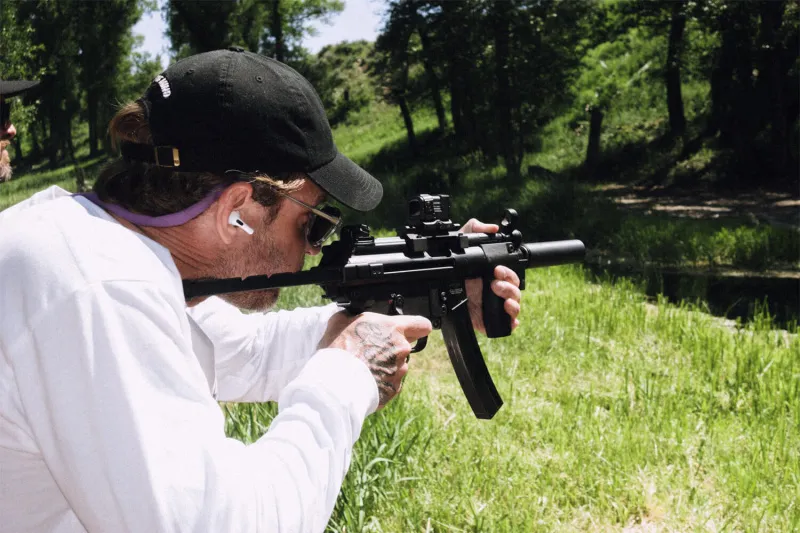
Legal Considerations When Buying a Suppressor
Suppressors are regulated under the National Firearms Act (NFA), which means purchasing one involves a few additional steps beyond your typical firearm transaction. Here’s what to expect:
$200 Tax Stamp – This is a one-time federal fee paid to the ATF for each suppressor.
ATF Background Check and Wait Time – After submitting your application, you’ll undergo a thorough background check. Wait times can vary but often range from a few weeks to several months.
Dealer Transfer to a Licensed FFL/SOT – Suppressors must be transferred through a dealer with a Special Occupational Tax license (SOT).
Trust vs. Individual Registration – You can choose to register the suppressor as an individual or through a trust, each with its own benefits. A trust can allow multiple responsible persons to legally possess and use the suppressor.
SilencerCo helps make the process easier with customer support, step-by-step guidance, and a dealer locator tool to connect you with licensed dealers in your area.
Final Thoughts: Choose Proven Performance
Suppressing a handgun changes how it sounds, how it handles, and how it runs. While it can be plug-and-play, it still requires some forethought, planning, and key considerations. Be sure to factor in your firearm’s design, caliber, and intended use.
Tossing a can on your handgun or PCC makes a ton of sense because subsonic ammo is so common in handgun calibers. It makes for a reliable, affordable, and easily suppressible platform. Give it a try, and you won’t ever want to go back to unsuppressed handgun shooting.
SilencerCo continues to lead the market with innovation, durability, and class-leading suppression. Whether you’re a first-time buyer or an experienced shooter, there’s a SilencerCo suppressor to match your needs.


